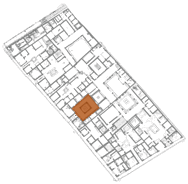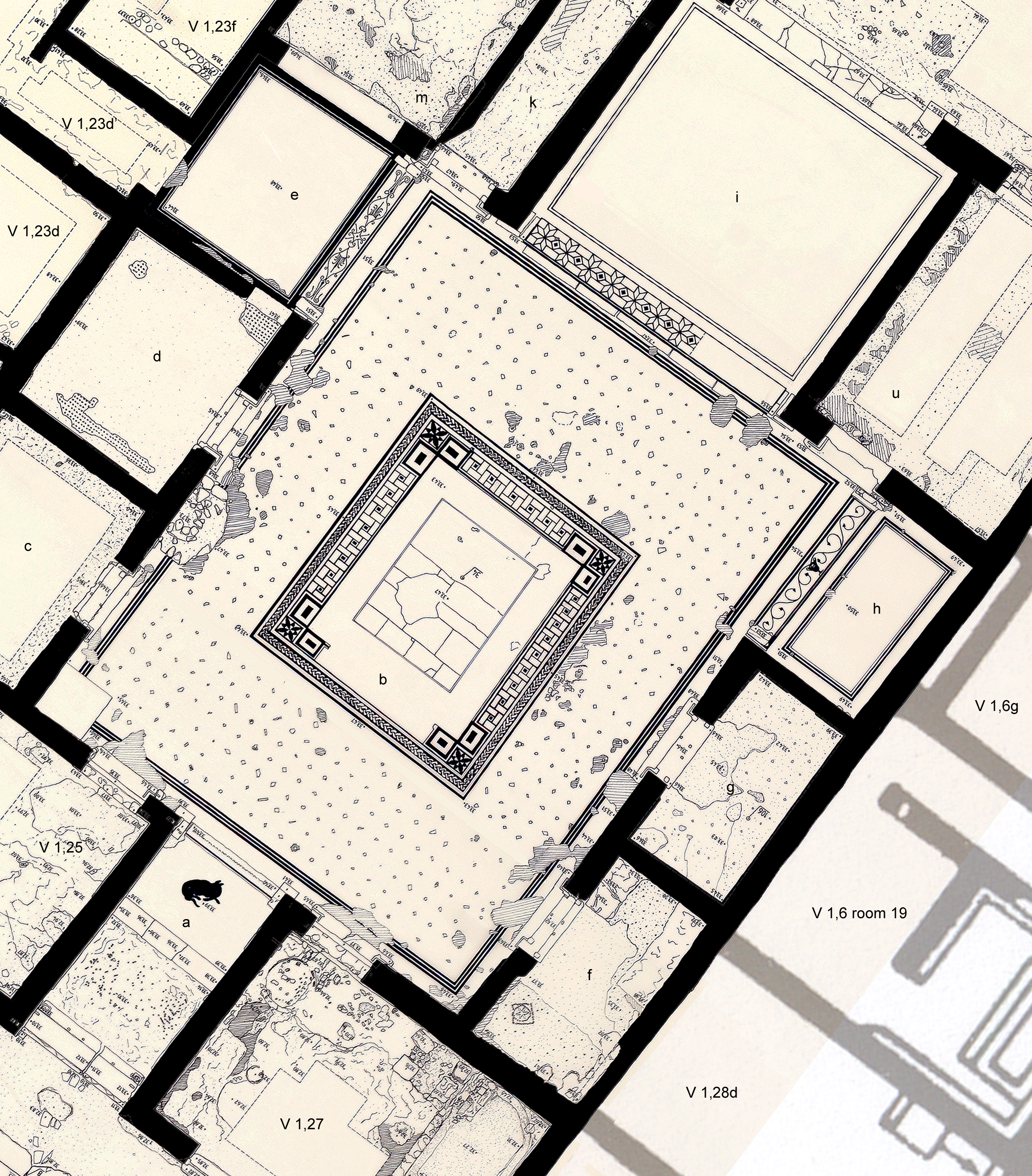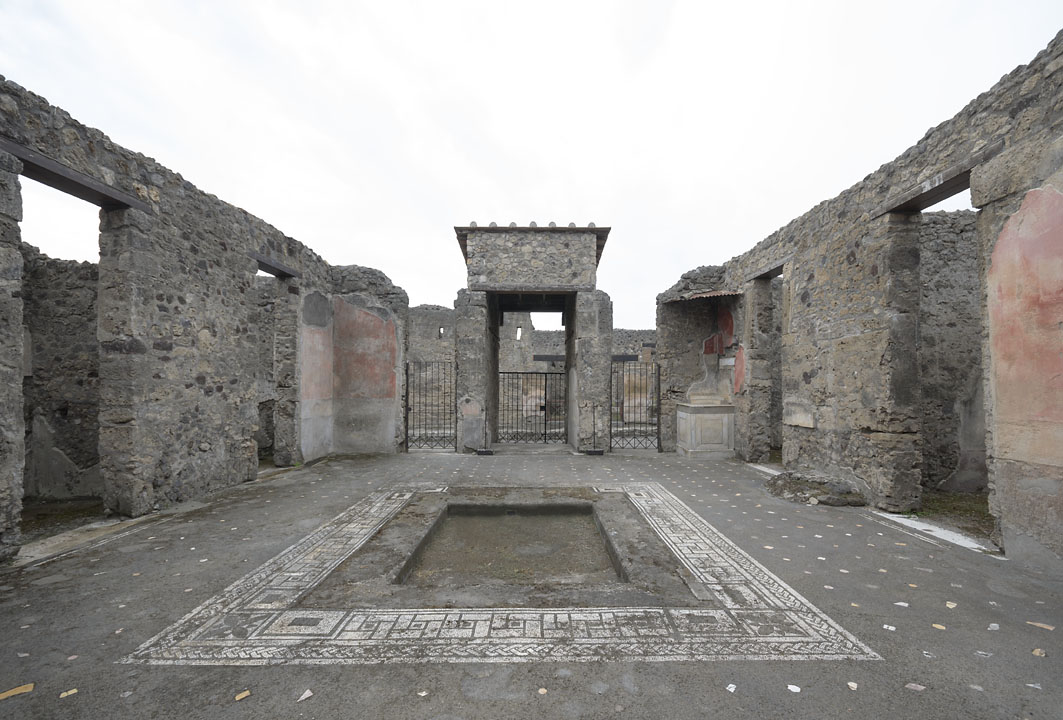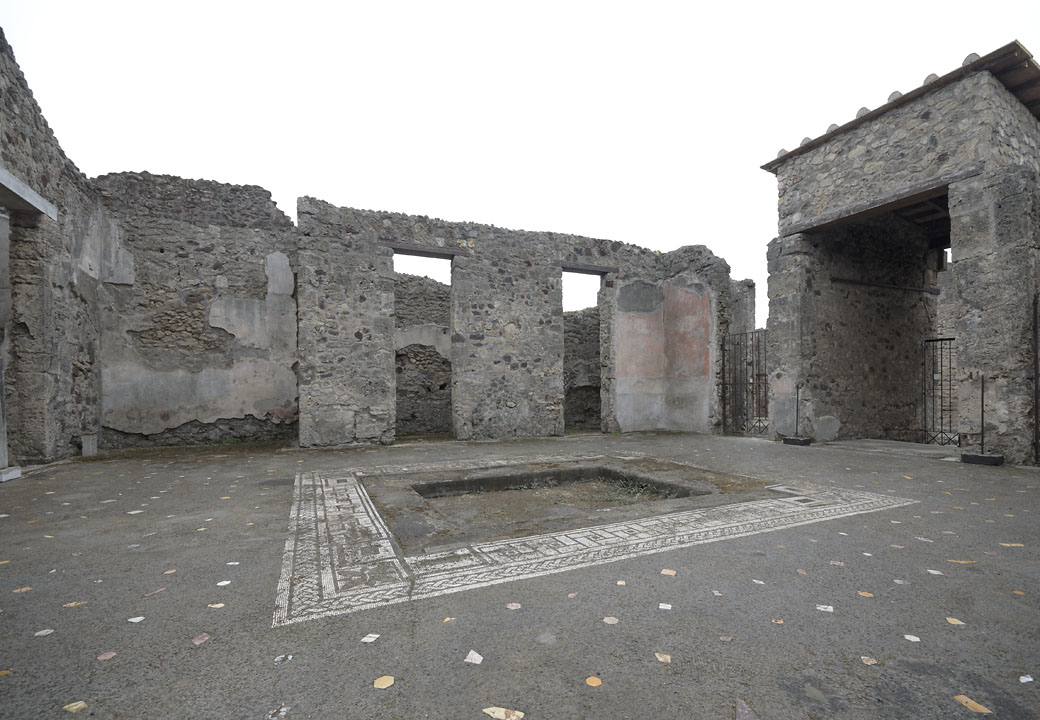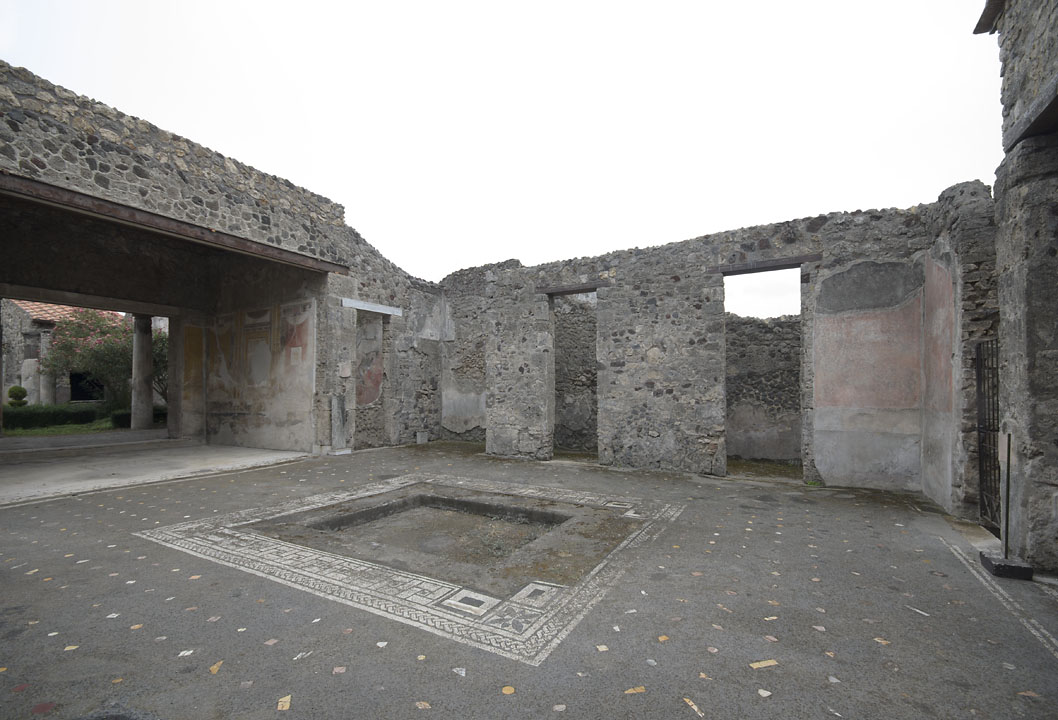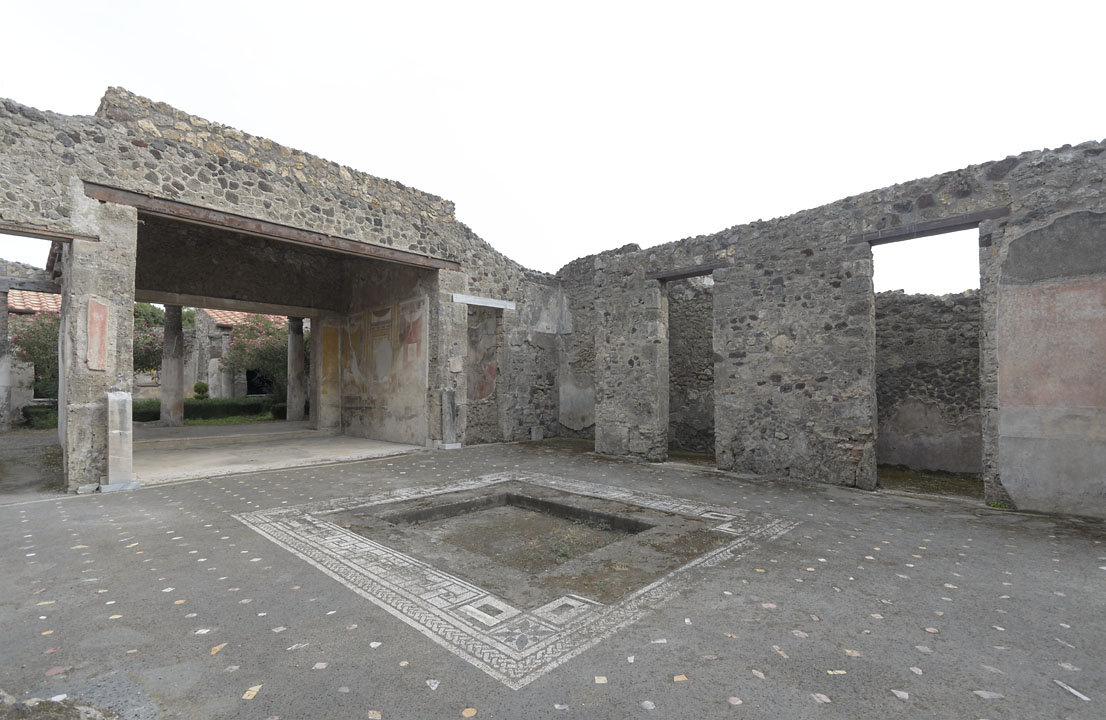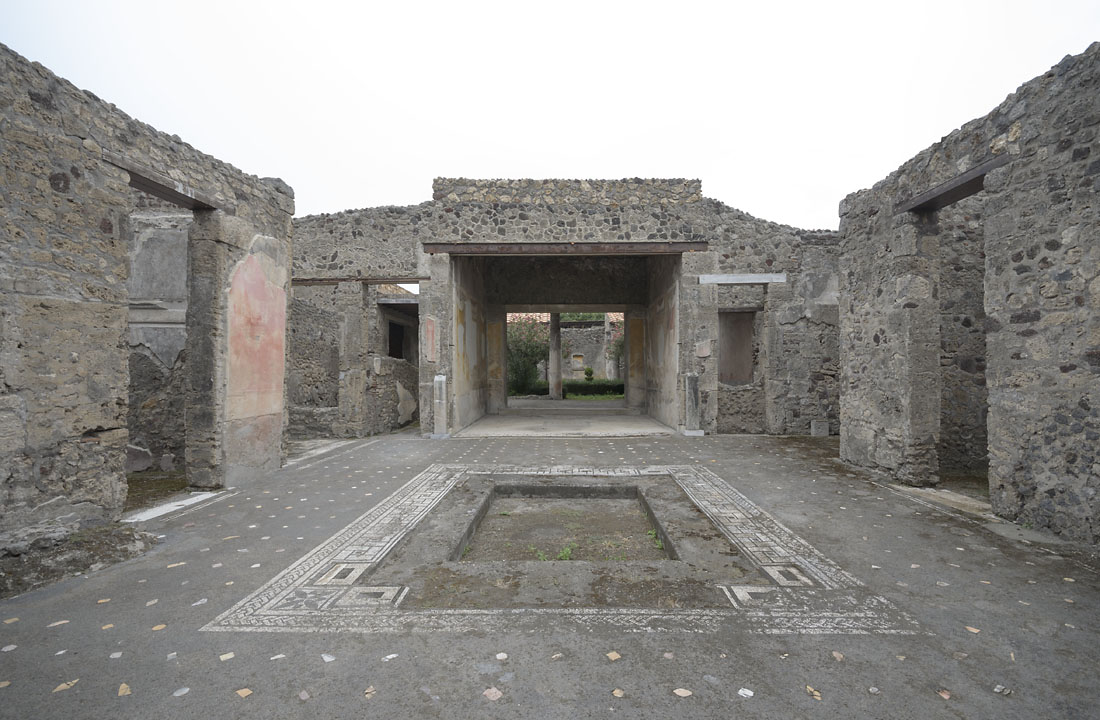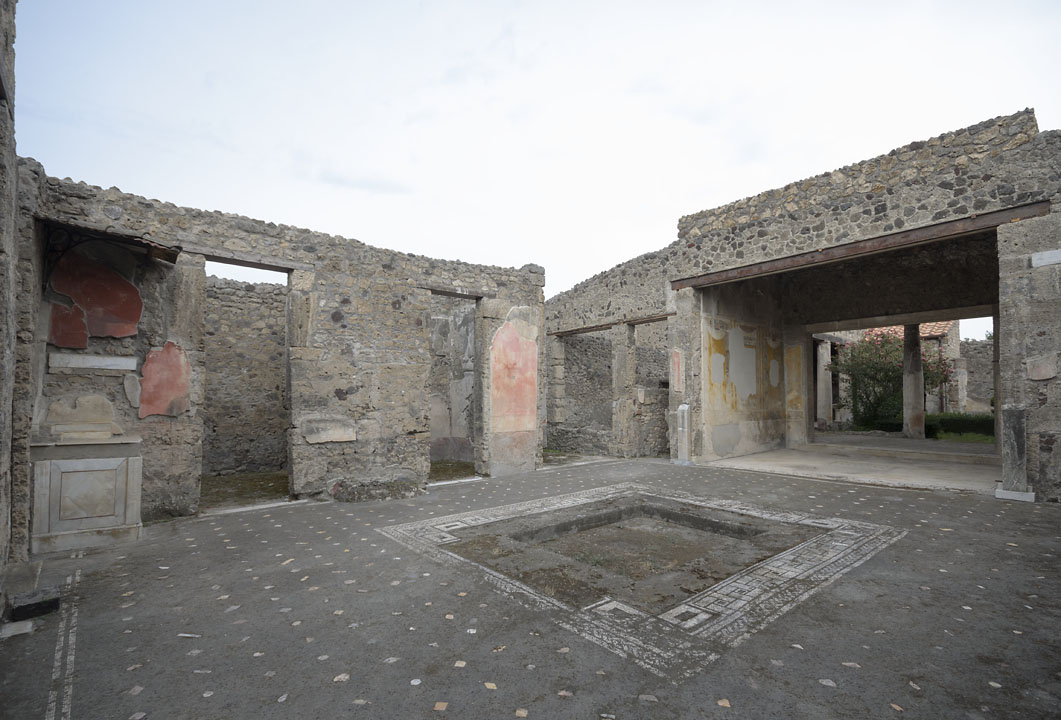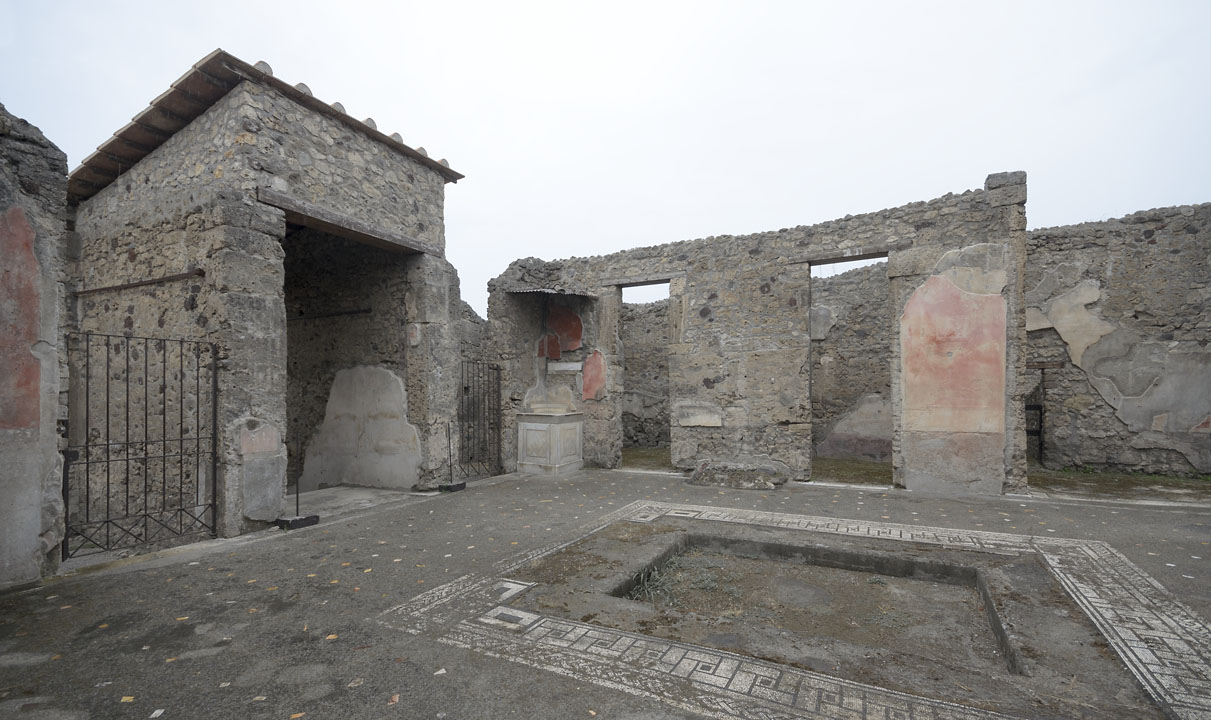Room b (atrium)
Description
A. Karivieri & R. Forsell
Atrium
The large Tuscan atrium was the centre of the western part of the house. The openings to all the rooms surrounding it were made in large Sarno limestone blocks while the walls in between were made in opus incertum. The door openings to the rooms in the north and south c,d,f,g all had Apennine limestone thresholds. In the west, on each side of the fauces, were also doors that led to tabernae 25 and 27. In the east, there is a niche in the wall south of the tablinum. This may have been a door to the room u behind, later closed.
The atrium had Third style wall paintings of which there are but scarse remains today. The best preserved parts, located in the southwest, northwest and northeast, now show that the dado was red with white and yellow dots, the predella was decorated with alternating squares and rectangles and that the main zone was red. Around the door openings there would have been wooden frames as the wall plaster stops ca 20 cm from the corners.
The beautiful black mosaic floor in opus tessellatum was decorated with pieces of differently coloured marble, inlayed in regular rows. It had a wide border of black and white geometric design around the centrally placed impluvium. Along the outer edges of the floor run two thin bands of white tesserae.
The original inner edge of the impluvium is today not visible, due to a restoration executed in 1995, but old photographs show a plaster layer with pieces of terracotta, presumably a supportive layer for a revetment that consisted of marble slabs.
Along the northern wall, between rooms c and d are the remains of the arca. In the northwestern corner stands the lararium that was decorated with the relief picturing the earthquake of AD 62. At one time another earthquake relief was attached to the wall above it. That relief did not originally come from the house. Both reliefs are now gone from the house.
Two herms, made of cipollino, were flanking the entrance to the tablinum in the east. The northernmost carried the famous bronze bust of Lucius Caecilius Iucundus which is now preserved in the National museum of Naples.
Both herms preserved the dedicatory inscription GENIO L NOSTRI FELIX L., "From freedman Felix, to the genius of our Lucius".
A documentation of taberna 27 in 2006 revealed two earlier water-outlets from the south-western corner of the atrium, below the entrance to taberna. These water-outlets led to the draw-shaft of cistern, later used as cess-pit. It is situated in the northeastern corner of taberna 27. These water conduits were in function before the mosaic floor and the decorative impluvium were constructed in the atrium, and were later closed.
The doors leading to the rooms north and south of the atrium, c, d, f and g, were moved in a second phase towards the centre of atrium, to create a more even wall surface. Possibly during the same phase, the entrance towards southeast, to the room u was closed. Another structural change was made in the northeastern corner of the atrium, when the north wall of corridor k, that leads from the atrium to the peristyle l, was reconstructed and a window was opened through the east wall of alae to room m. A new entrance through the north wall of alae led the visitor to the North House.
The relief decorating the lararium can directly be connected with the building activities and repairs after the earthquake of AD 62, dating the construction of the lararium above the mosaic floor after AD 62. The arca foundation above the mosaic marks the important position of the moneychest in a house of the argentarius, the family of L. Caecilius Iucundus.
Chop-marks in the blocks at the bottom of the impluvium may belong to the latest repairs of the atrium area.
Impluvium
Lararium

